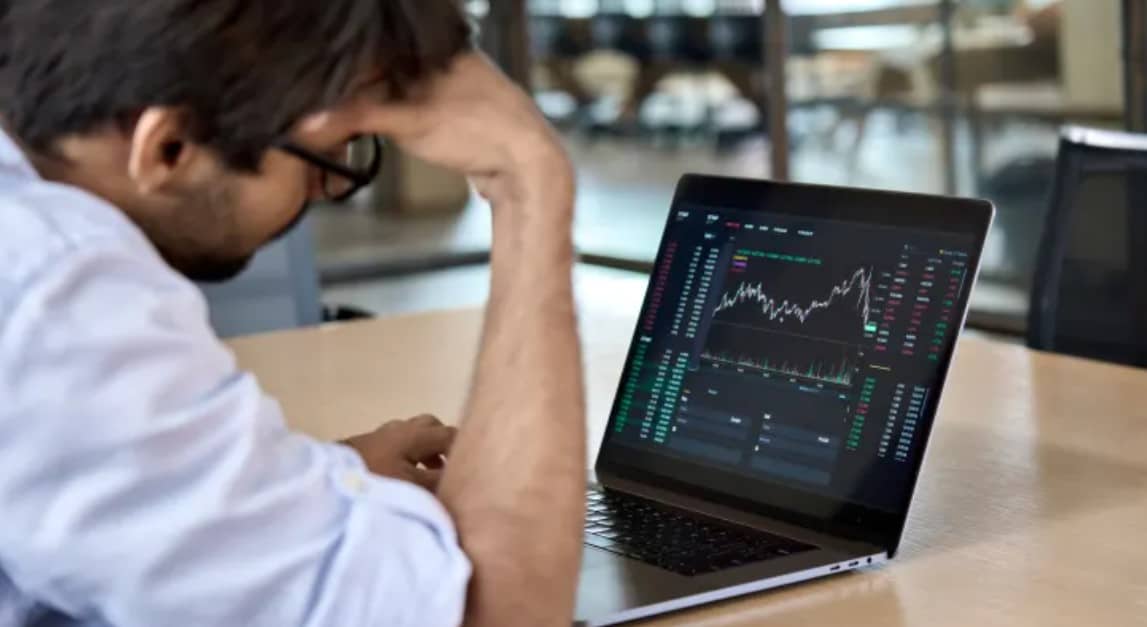There’s no doubt that there’s a lot at hand contributing to the market’s latest downward slide: 40-year-high inflation, rising interest rates, global economic uncertainty, war in Europe, an ongoing pandemic and now worries about a potential recession.
The recent surge of market volatility has us all on our toes, leaving new and seasoned investors alike wondering what to do with their money when their investments tank.
Historical data from the American Association of Individual Investors (AAII) Sentiment Survey index shows that while the second half of 2021 saw a lot more bullish investors than bearish investors, sentiment has flopped and there are now way more bearish investors than bullish.
If you’re wondering what should be your next move in a market downturn, we got some advice from a market risk expert.
“Hopefully, you lightened up when things were getting frothy and you have some dry powder with which to start nibbling at current bargains,” investing and market risk expert Richard Smith, CEO of investing tool RiskSmith, tells Select. “In general, you should be selling into irrational exuberance and buying into irrational pessimism.”
To put it another way, Smith echoes conventional investing wisdom that suggests selling when everyone else is buying and buying when everyone else is selling. “Right now, sentiment is at historic levels of bearishness,” he adds.
What to consider before buying the dip
Investors taking advantage of the latest market swings and buying the dip, however, should do so with caution. Buying stocks at a discount and holding for long periods of time is a common strategy, but it could be risky given it’s tough to determine if the market will keep falling. Stocks could tumble even more and there’s the risk of an impending recession.
″‘Buying the dip’ depends upon your timeframe,” Smith says. “If you can keep your money in the markets for at least a couple of years, this is a good dip to buy. If you’re banking on the market reversing [soon] and heading back up to new highs, you’ll likely be disappointed.”
Crypto investors should especially proceed with caution. Smith suggests that any investments in this “very volatile asset” should be small and should be with a mindset of holding for five to ten years.
Money that you need within the next year is certainly not to be invested and is best put in a safe savings vehicle, such as a high-yield savings account. We like the Marcus by Goldman Sachs High Yield Online Savings for offering an above-average interest rate, no fees whatsoever and easy mobile access. It’s the most straightforward savings account to use when all you want to do is grow your money with zero conditions attached.
And if you’re earmarking funds for a certain goal, such as a future vacation or down payment on a home, consider the Ally Online Savings Account that allows users to organize their saving goals by creating up to 10 different “buckets” within the same savings account.
When you’re ready to buy the dip
For those looking to buy the dip, one solid option are dividend-paying stocks since they provide a steady income stream and can potentially protect your money against inflation. Rising prices can boost company profits, which in turn pays you dividends — literally. The stable dividends you can receive mimic stable interest payments you could otherwise get with an investment like bonds.
You can add dividend-paying stocks to your portfolio through the best stock trading platforms that don’t charge commission fees, including TD Ameritrade, Ally Invest, E*TRADE, Vanguard, Charles Schwab and Fidelity. Or, if you want a simpler interface and trading platform, consider an investing app like Robinhood.
If you’re able to invest money for the long haul, an S&P 500 index fund can provide solid long-term returns. While it’s possible the market could continue to go down in the near-term, the S&P 500 has provided a historical average yearly return of about 10.5% since the inception of its modern structure in 1957.
Another inflation-protected asset to consider are I bonds, which are virtually risk-free investments backed by the U.S. government that currently pay more than 9% in interest a year. Individuals can buy I bonds through the U.S. Treasury Department’s website, up to $10,000 each year plus an optional $5,000 extra if they put their tax return in paper bonds.
Bottom line
The unrest in the markets is definitely unsettling, but market volatility is normal and expected. At the end of the day, investing is a long game and history has shown us that riding it out typically pays off.
While stocks plunging means you can buy them more cheaply, be careful when entering the market during turmoil.

